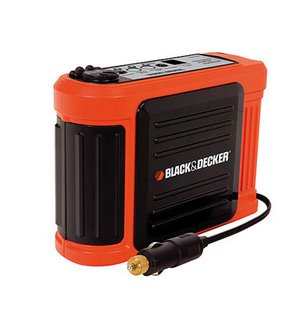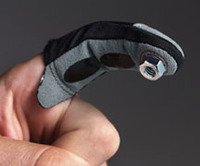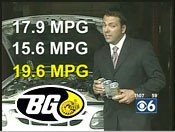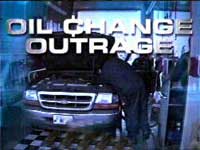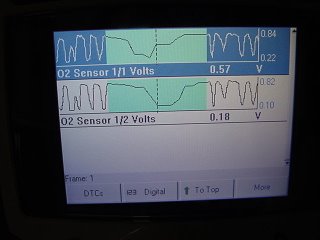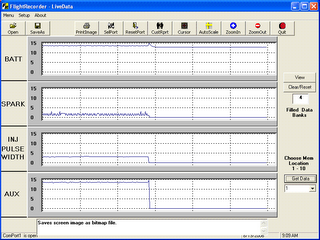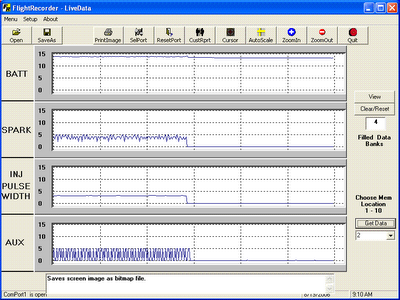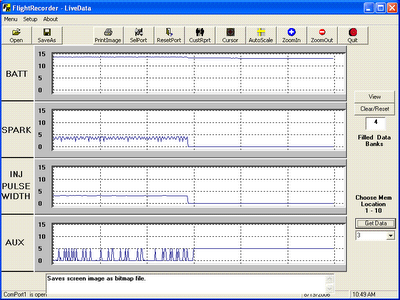As I have said before, check your owner's manual to see what maintenance is needed on your vehicle
before it needs repairs. Maintenance is much cheaper than repairs. By not taking care of your vehicle
and ignoring warning signs such as pulling or drifting, noises or mysterious problems that seem to fix
themselves will result in a costly repair and leave you stuck. There are three main types of problems you
will run into.
Starting Problems.
Most starting problems are a result of a battery in poor condition. Most of the time these problems are
solved with a jump-start or battery charge. If neither of these cures gets the car started, you will need
a mechanic to look at it to determine the problem.
Moving Problems.
These are problems such as hesitation, loss of power or idle problems. An experienced mechanic is
the best person to handle these problems. Overheating could be due to low coolant level or vehicle
overloading.Turning on the A/C could help lower the temperature as well as turning the heater on high
speed and full hot. In these cases you should check and top off the coolant or lighten the load and,
if you are towing a trailer, dropping the trailer off. If this doesn't help, you will need a mechanic.
A professional mechanic should always inspect transmission problems for repair or adjustment. If you
can still drive the vehicle, drive slowly and carefully to the nearest repair shop. If it won't move at all,
call a tow truck.
Stopping Problems.
If the brakes grab, squeal, drag or don't hold, they should be checked and repaired at a repair shop.
If the problem is due to bad or worn out tires, they should be replaced before damage to other, more
expensive parts of the car, can occur.
Tips on Tires
There will be instructions on using the jack on the underside of the trunk lid or under the spare tire cover, so when changing a tire these are the first places to look. You should carry a piece of plywood
24" x 24" x 1" to place under the jack in case there is no hard surface where you get a flat tire.
Never use a brick or any kind of patio block since there is the possibility of breaking under the weight
of the vehicle. Once the vehicle is up, do not get under the car for any reason!
How to Change A Flat Tire
Changing a flat is something you should practice before you get a flat. This is something that should
be done by everyone who drives the vehicle, Mom, Dad, Son, or Daughter. Pull off the road as far and as
safely as possible. Park on a hard level surface if at all possible, even if it means driving into a nearby
parking lot. Turn on your four way flashers. Chock one front and one rear wheel. Place an automatic
transmission into PARK or a manual transmission into REVERSE. You should have wheel chocks, a lug
wrench, rubber hammer, penetrating oil and, of course, the jack in your trunk.If your vehicle has hubcaps, use the screwdriver or the end of the jack handle to pry it off. Some hubcaps have a lock in the center that needs a special key to remove. In most vehicles it is attached to, or near, the jack or jack handle.
On some vehicles it is in the glove compartment. Make sure you know where it is before you need it.
Crack the lug nuts loose before you jack up the vehicle so you don't knock the vehicle off the jack.
Put your foot on the lug wrench and turn the lug nuts counterclockwise. Remember, righty tighty
lefty loosey.Some lug nuts have a left-handed thread. Look on the end of the wheel stud and if you see
an "L", it is a left-handed thread. In that case you would turn the lug wrench clockwise to remove them.
Use the penetrating oil on the lug nuts and wait a few minutes to make getting them off easier,
especially if they are rusted.
Scissor jacks will have a pad, slot or protrusion that they fit into; bumper jacks will fit into a slot in the
bumper. Actually, I haven't seen a bumper jack in years but a lot of older vehicles will have them.
Place the jack in the position shown in the owner's manual. Some vehicles have detailed instructions
with diagrams. Jack up the vehicle until the wheel is about an inch off the ground. Now remove all the
lug nuts and slide the tire off.Position the spare in the wheel well and line up the holes in the spare
with the wheel studs and place the tire on the vehicle. Most spare tires on passenger cars are of the
"Space Saver" type. These tires are for temporary use only and you should not exceed the maximum
speed prominently marked on the tire, usually 50 miles per hour. Have the original tire repaired or
replaced as soon as possible.Install the lug nuts and tighten them by hand, then a ¼ turn with the
lug wrench. Don't tighten them completely just yet. Lower the vehicle and remove the jack. In a
crisscross pattern, tighten the lug nuts in this order. Be careful not to over tighten them or they may
break off. Another ½ turn is tight usually enough.
If it is a full size spare, replace the hubcap being careful the valve stem goes through the hole provided
for it in the hubcap. Use the rubber mallet to tap the hubcap on or hit it hard with the heel of your hand.
Check it by tugging on it to make sure it is on tightly.
If the tire has a slow leak, you can use a can of flat fixer to temporarily repair it. Just follow the directions on the can carefully. Drive to the next service station and have it repaired as soon as possible.
Be sure to tell the attendant that the tire contains an aerosol flat-tire fixer so he can take the proper
precautions when repairing it.
Low air pressure and worn tires can make squealing noises, mostly when turning. Check the tire
pressures and replace worn out tires. Low air pressure, bad front-end parts or the front end being out
of alignment will cause rapid tire wear. Check and correct the tire pressures. If they are okay,
take it to a repair shop and have the front end and wheel alignment checked.
A few things can cause a tire wobble. Always first, check the tire pressures, lug nuts or bad tires.
Correct the problem if one of these problems is found. Missing wheel weights, bent rims, worn steering
linkage or misalignment can also cause a wheel wobble. Have the car repaired by a mechanic if you
can't fix it yourself.
Other Problems
If there is any steam, fluids, smells or smoke coming from your car, other than the normal cold morning
steam from the tail pipe, catalytic converter smell or diesel engine smell, someone with repair experience or a professional mechanic should check the car. Any problems found should be repaired as soon as possible.
Any strange noises such as hissing, clunking, squealing, clicking or whirring coming from the front, rear
or from the engine should be investigated and repaired by a mechanic if it is not something you can
do yourself.
Most windshield wiper problems are due to a burnt fuse or worn out wiper blades. If you find the problem
is elsewhere, you should have a mechanic repair it before it rains again.
If you have lights, headlights high and low beam, turn signals, tail lights, emergency flashers etc.,
that don't work or stay on all the time the first thing to do is check the fuse and bulbs. Other than
that the problem may be bad wiring or bad switches. Have a mechanic look at it and repair the problem.
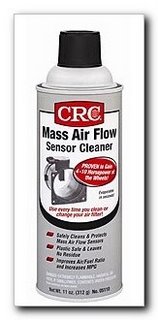 The mass airflow sensor is placed in the stream of intake air. It measures the intake flow rate by measuring a part of the entire intake flow. It consists of a hot wire that is supplied with electric current from the ECM. The temperature of the hot wire is controlled by the ECM a certain amount. The heat generated by the hot wire is reduced as the intake air flows around it. The more air, the greater the heat loss. Therefore, the ECM must supply more electric current to maintain the temperature of the hot wire as airflow increases. The ECM detects the airflow by means of this current change.
The mass airflow sensor is placed in the stream of intake air. It measures the intake flow rate by measuring a part of the entire intake flow. It consists of a hot wire that is supplied with electric current from the ECM. The temperature of the hot wire is controlled by the ECM a certain amount. The heat generated by the hot wire is reduced as the intake air flows around it. The more air, the greater the heat loss. Therefore, the ECM must supply more electric current to maintain the temperature of the hot wire as airflow increases. The ECM detects the airflow by means of this current change.

